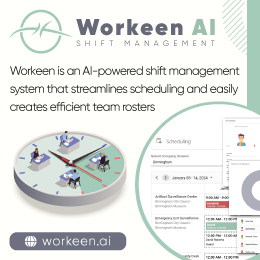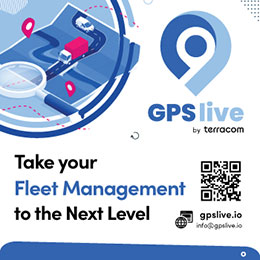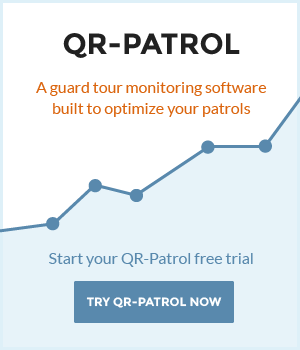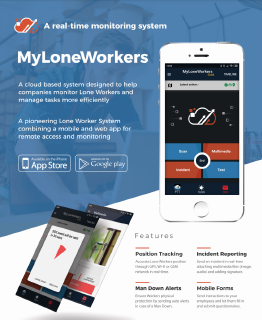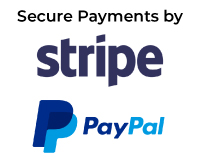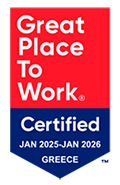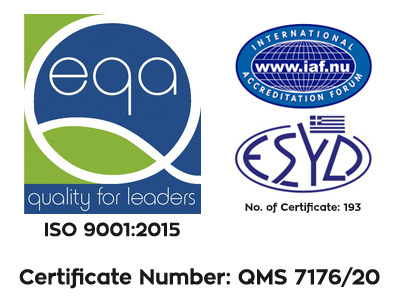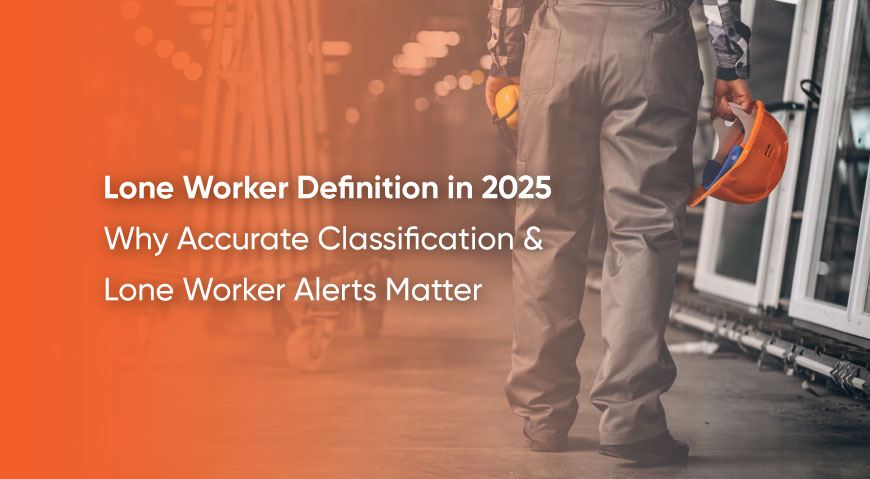
Lone Worker Definition in 2025: What It Really Means and Why Accurate Classification Matters
Table of Contents
- The Modern Lone Worker Definition in 2025
- Why Accurate Lone Worker Classification Matters Today
- Lone Worker Alerts Explained: A Core Safety Requirement
- How MyLoneWorkers Supports Accurate Lone Worker Identification
- How the MyLoneWorkers System Works
- Transforming Lone Worker Safety: Key MyLoneWorkers Features
- Why Accurate Classification Saves Lives—and Money
- How to Classify Lone Workers Correctly: A Quick Checklist
- Why Choose MyLoneWorkers for Lone Worker Protection
- Final Thoughts: The Lone Worker Definition Is Expanding—Your Safety Strategy Should Too
In 2025, the way companies understand and protect their workforce has changed dramatically. More employees now work remotely, independently, or across dispersed field locations. This shift has made one concept more important than ever: the lone worker definition.
Correctly identifying lone workers is not just a compliance requirement—it’s a strategic responsibility. Misclassification can lead to unnecessary risks, delayed emergency responses, and major organizational liability. It also determines whether employers deploy the right lone worker alert systems, monitoring tools, and safety protocols.
In this guide, we explore the modern definition of lone workers, why accurate classification matters in 2025, and how the MyLoneWorkers platform helps organizations protect every individual operating away from supervision.
The Modern Lone Worker Definition in 2025
Traditionally, lone workers were described simply as people “working alone without close or direct supervision.”
In 2025, this definition has expanded—and become far more relevant.
Updated Lone Worker Definition (2025):
A lone worker is any employee who performs job duties without direct, immediate supervision or in situations where assistance cannot be provided quickly in emergencies.
This includes workers who may not be physically isolated but still operate without practical oversight or immediate support.
Examples of modern lone workers:
 Field technicians
Field technicians Utility maintenance crews
Utility maintenance crews Cleaners and janitorial teams
Cleaners and janitorial teams Hospitality staff working on isolated floors
Hospitality staff working on isolated floors Inspectors and auditors
Inspectors and auditors Delivery and courier personnel
Delivery and courier personnel Security guards and patrol officers
Security guards and patrol officers Construction workers in remote areas
Construction workers in remote areas Social workers visiting clients alone
Social workers visiting clients alone Night-shift workers with minimal staff present
Night-shift workers with minimal staff present
In other words, the lone worker definition is no longer tied only to location. It is tied to access to help.
Why Accurate Lone Worker Classification Matters Today
Understanding who qualifies as a lone worker is essential for four major reasons:
1. Safety Compliance
Regulations worldwide increasingly require employers to identify lone workers and implement safety measures—often including a lone worker alert system. Misclassification exposes organizations to penalties and legal issues.
2. Emergency Readiness
If someone is incorrectly assumed to have support nearby, the company may not provide proper emergency tools. This can delay responses to falls, slips, confinement, violence, or health emergencies.
3. Improved Risk Assessment
Lone workers face unique hazards, including:
 Slips, trips, and falls
Slips, trips, and falls Medical emergencies
Medical emergencies Workplace violence
Workplace violence Equipment malfunctions
Equipment malfunctions Hazardous environments
Hazardous environments Driving and transportation risks
Driving and transportation risks
Accurate identification ensures that risk assessments are complete and tailored.
4. Duty of Care and Corporate Responsibility
Organizations have a moral and legal duty to protect staff. When workers operate alone, this duty increases. Proper classification ensures employers deploy the right tools to safeguard staff at all times.
3. Lone Worker Alerts Explained: A Core Safety Requirement
A lone worker alert is a real-time notification sent when a worker signals distress or when the system automatically detects an incident.
In 2025, lone worker alerts have evolved dramatically. They are faster, more accurate, and often automated.
Types of Lone Worker Alerts:
 Manual SOS alerts: Activated by the worker via smartphone or BLE panic button.
Manual SOS alerts: Activated by the worker via smartphone or BLE panic button. Man Down alerts: Automatically triggered when sudden impact, immobility, or a fall is detected.
Man Down alerts: Automatically triggered when sudden impact, immobility, or a fall is detected. Welfare check alerts: Triggered when workers fail to acknowledge scheduled check-ins.
Welfare check alerts: Triggered when workers fail to acknowledge scheduled check-ins. Geofence alerts: Generated when workers enter or exit restricted or hazardous zones.
Geofence alerts: Generated when workers enter or exit restricted or hazardous zones. Test alerts: Non-emergency alerts used to confirm system functionality.
Test alerts: Non-emergency alerts used to confirm system functionality.
A modern lone worker alert system dramatically reduces emergency response time—and often saves lives.
How MyLoneWorkers Supports Accurate Lone Worker Identification
MyLoneWorkers is built specifically to support modern remote and field-based teams. The platform makes it easy for companies to identify lone workers, monitor their safety, and respond instantly to alerts.
What is MyLoneWorkers?
MyLoneWorkers is a cloud-based workforce management and safety system designed for field operations, security teams, and remote blue-collar workers. It consists of both web and mobile applications (Android and iOS), offering real-time visibility into worker activity and wellbeing.
The system enhances safety through:
 Man Down alerts
Man Down alerts External BLE panic buttons
External BLE panic buttons Welfare Checks
Welfare Checks SafePass functionality
SafePass functionality Geofence alerts
Geofence alerts AI-driven assistance and reporting
AI-driven assistance and reporting
Companies use MyLoneWorkers to protect staff, streamline operations, and ensure compliance with lone worker safety standards.
How the MyLoneWorkers System Works
The platform uses NFC, QR codes, Beacons, Virtual Checkpoints, GPS, Wi-Fi, and GSM technology to monitor worker activity in real time.
Key steps of operation:
1. Workers scan checkpoints
Employees scan NFC, QR, or Beacon tags at specific locations. Each scan includes automatic location data and timestamp.
2. Data goes to the cloud in real time
All activity is securely uploaded to the MyLoneWorkers web application. Managers can monitor teams across buildings, cities, or countries instantly.
3. Incidents and notes are attached easily
Employees can submit:
 Photos
Photos Voice messages
Voice messages Written notes
Written notes Signatures to enhance inspections, task completion, or incident reporting.
Signatures to enhance inspections, task completion, or incident reporting.
4. SOS or Man Down triggers a lone worker alert
If danger occurs:
 Pressing the SOS button sends a direct alarm
Pressing the SOS button sends a direct alarm Man Down detection alerts supervisors automatically
Man Down detection alerts supervisors automatically BLE panic buttons offer hands-free emergency signaling
BLE panic buttons offer hands-free emergency signaling Geofence alerts notify when workers move outside safe perimeters
Geofence alerts notify when workers move outside safe perimeters
This ensures help arrives quickly—no matter how remote the worker is.
Transforming Lone Worker Safety: Key MyLoneWorkers Features
 Man Down Alerts: When a worker slips, collapses, or becomes immobilized, the system instantly sends an alert—ideal for high-risk tasks or workers operating at night, outdoors, or on hazardous sites.
Man Down Alerts: When a worker slips, collapses, or becomes immobilized, the system instantly sends an alert—ideal for high-risk tasks or workers operating at night, outdoors, or on hazardous sites. External BLE Panic Button: If a phone is not accessible, workers can press the wearable BLE panic button. This instantly triggers a lone worker alert with precise location data.
External BLE Panic Button: If a phone is not accessible, workers can press the wearable BLE panic button. This instantly triggers a lone worker alert with precise location data. Welfare Check: Managers can set regular check-in intervals. Missed check-ins generate immediate alerts via the web platform and email.
Welfare Check: Managers can set regular check-in intervals. Missed check-ins generate immediate alerts via the web platform and email. Geofence Alerts: MyLoneWorkers notifies supervisors when a worker enters or leaves a defined area, ensuring extra safety in hazardous or restricted zones.
Geofence Alerts: MyLoneWorkers notifies supervisors when a worker enters or leaves a defined area, ensuring extra safety in hazardous or restricted zones. SafePass: Protect VIPs or individuals with a dedicated mobile app designed for personal safety monitoring.
SafePass: Protect VIPs or individuals with a dedicated mobile app designed for personal safety monitoring. AI Assistant: Managers can ask questions in plain English—like: “Show all SOS alerts from today” or “Which worker missed welfare checks this week?”. Instant data-driven answers save time and improve decision-making.
AI Assistant: Managers can ask questions in plain English—like: “Show all SOS alerts from today” or “Which worker missed welfare checks this week?”. Instant data-driven answers save time and improve decision-making. Issue Management & Work Orders: Create tasks, resolve incidents, track progress, and organize response workflows without confusion.
Issue Management & Work Orders: Create tasks, resolve incidents, track progress, and organize response workflows without confusion. Trail Workers: Automatically visualize worker routes on a map, either static or animated.
Trail Workers: Automatically visualize worker routes on a map, either static or animated.
These features combine to give organizations a complete picture of remote operations while ensuring workers remain safe and connected.
Why Accurate Classification Saves Lives—and Money
Correctly identifying who qualifies under the lone worker definition is a direct investment in safety, efficiency, and compliance.
Benefits include:
 Reduced workplace accidents
Reduced workplace accidents Faster emergency response
Faster emergency response Lower operational costs
Lower operational costs Fewer legal liabilities
Fewer legal liabilities Higher staff confidence and morale
Higher staff confidence and morale Improved compliance with industry standards
Improved compliance with industry standards
When companies understand precisely who needs protection, they can implement the right lone worker alert tools and protocols without wasting resources.
How to Classify Lone Workers Correctly: A Quick Checklist
Here are practical questions to determine whether an employee fits the lone worker definition in 2025:
 Is supervision remote or delayed?
Is supervision remote or delayed? Do they travel between locations or work in the field?
Do they travel between locations or work in the field? Do they work at night, on weekends, or during low-staffing hours?
Do they work at night, on weekends, or during low-staffing hours? Would help be delayed if an incident occurred?
Would help be delayed if an incident occurred? Do they interact with the public or enter unknown environments?
Do they interact with the public or enter unknown environments? Do they perform hazardous tasks without onsite support?
Do they perform hazardous tasks without onsite support?
If you answered yes to any of these questions, the worker likely needs lone worker protection tools, including automated alerts and monitoring.
Why Choose MyLoneWorkers for Lone Worker Protection
Organizations choose MyLoneWorkers because it offers:.
 A complete safety suite (SOS, Man Down, Welfare Checks, BLE button, Geofence alert)
A complete safety suite (SOS, Man Down, Welfare Checks, BLE button, Geofence alert) Cloud-based setup—no installation or complex infrastructure
Cloud-based setup—no installation or complex infrastructure Real-time monitoring from anywhere in the world
Real-time monitoring from anywhere in the world Instant emergency alerts with exact location
Instant emergency alerts with exact location AI-driven reporting and insights
AI-driven reporting and insights Easy scheduling and task management
Easy scheduling and task management Customizable fields and workflows
Customizable fields and workflows Fast deployment and intuitive mobile app
Fast deployment and intuitive mobile app
It is one of the most comprehensive and user-friendly systems for protecting modern field teams.
Final Thoughts: The Lone Worker Definition Is Expanding—Your Safety Strategy Should Too
In 2025, the lone worker definition is broader than ever. Workers do not need to be physically alone to be considered “lone.” They simply need to be without immediate supervision or direct access to help.
This makes proper classification essential—and deploying the right lone worker alert technology a non-negotiable part of a modern safety strategy.
MyLoneWorkers helps organizations keep pace with evolving safety standards, empowering them to protect every worker, respond instantly to emergencies, and ensure full compliance.
Protect your lone workers today Book a demo with us today or contact our team to learn more and start building a safer future.

